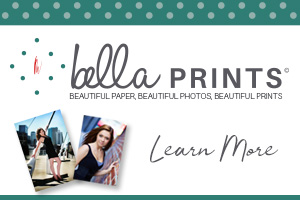Intro by Skip Cohen
Sarah Petty is back this week with five solid tips to help you create a stronger brand, and brand-building I one of my favorite topics to write about.
Most of you are a flying solo. You don’t have a huge marketing team – YOU are your brand. At the same time you’re often penny-wise and dollar foolish taking short cuts on the material you’re sharing. As a result, you’re a DIY marketing manager, and too often, you’re just not aware of how your image is being impacted by what you’re presenting to the public.
You are your brand, but that doesn’t mean you need to be anything but perceived as a professional. It all starts with taking the time to define your identity and doing the same thing major corporations do in establishing brand-awareness – set the standards for identity and consistency.
From everything you publish to the look and feel of your website, blog, studio, brochures, business cards, you want the same professional look and feel.
And to Sarah’s points about training your employees – most of you don’t have a lot of employees, but you do have people who support you, publications you work with and friends you rely on to help get your message out there. Take the time to establish the standards for the way your brand is always presented!
By Sarah Petty
Your logo, signage, and promotional pieces are the external face of your company. Creating standards for your identity is crucial. You want your audience to see your best light every single time.
Here are 5 brand-building tips:
- Hire a pro. Logos, signs, and graphics should only be designed by professionals. I know that could be expensive. But consider the fact that you’ll spend $200 on a name brand jacket to enhance your personal identity. Are you really going to let some random person who has some fun fonts and a copy of Photoshop, design your business identity because they are cheap?
- Go for simple and timeless. Choose easy-to-read fonts instead of trendy fonts. Choose clean graphics and symbols to represent your brand. A fly-fishing outfitter in Idaho doesn’t need a logo that has an image of a fish, a pole, the Grand Tetons, the Snake River, and a potato field. It’s too much.
- Give safe file formats. Ask your designer to send you your logos, trademarks, icons, and any other digital images in file formats that cannot be manipulated, reshaped, edited, or changed. When you send your logo out to be featured in an advertisement or at an event you’ve sponsored, you want to ensure that no one can squish it, change the colors, or do any other crazy thing to it.
- Create an identity-standards manual. Take the time to create a living document or internal website that lists and states all the rules, fonts, colors, widths, etc., of your identity.
- Communicate your identity rules. Every time you send out something that represents your identity, attach your standards and agreements for usage and ensure that all your employees do the same.


















